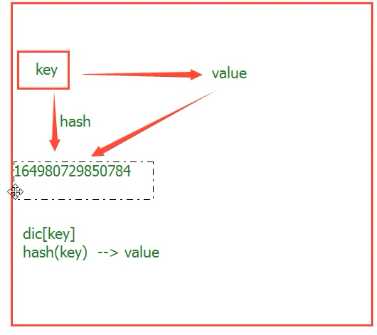python内置函数
2021-06-17 16:05
标签:地址 函数 第一个 查看内存 lease 返回 字符串类 rabl 浮点数 print(locals()) #返回本地作用域中的所有名字 迭代器.__next__() range(1,2)是可迭代的,不是迭代器 help()帮助 help(str) dir() 查看一个变量拥有的方法 callable()检查一个变量是否为函数(是否能被调用) def func():pass id()查看内存地址 hash()可以对字符串,元组哈希,每哈希一次它的值就不一样 字典的寻址方式:key进行hash,将value存在hash地址上,通过hash值来找到value import time 某个方法属于某个数据类型的变量,就用.调用 print(‘我们的祖国是花园‘,end=‘‘) #指定输出的结束符 eval(‘print(123)‘) code = ‘‘‘for i in range(10): code1 = ‘for i in range(0,10): print (i)‘ code2 = ‘1 + 2 + 3 + 4‘ code3 = ‘name = input("please input your name:")‘ 复数 —— complex 浮点数(有限循环小数,无限循环小数) != 小数 :有限循环小数,无限循环小数,无限不循环小数 如果小数特别长,后面可能不准,因为二进制转换问题导致,所有语言都有这个问题 print(bin(10)) #二进制 0b1010 #0b代表二进制 print(abs(-5)) #绝对值 print(divmod(7,2)) # div除法 mod取余 (3, 1) print(round(3.14159,3)) #取小数点后3位,四舍五入 3.142 8 sum(iterable,start) 求和,只能传两个参数,第一个是可迭代对象 ret = sum([1,2,3,4,5,6]) ret = sum([1,2,3,4,5],6) 21 print(min(1,2,3,-4)) print(max(1,2,3,-4)) -4 python内置函数 标签:地址 函数 第一个 查看内存 lease 返回 字符串类 rabl 浮点数 原文地址:https://www.cnblogs.com/daoyueweiku/p/9719962.html
print(globals()) #返回全局作用域中的所有名字
global 变量
nonlocal 变量
next(迭代器)
迭代器 = iter(可迭代的)
迭代器 = 可迭代的.__iter__()
print(dir([]))
print(dir(1))
print(callable(func))
t = __import__(‘time‘)
print(t.time())
如果某个方法不依赖于任何数据类型,就直接调用 —— 内置函数 和 自定义函数
print(‘我们的祖国是花园‘,end=‘‘)
print(1,2,3,4,5,sep=‘|‘) #指定输出多个值之间的分隔符
f = open(‘file‘,‘w‘)
print(‘aaaa‘,file=f) #默认是打印到屏幕,如果指定文件,打印内容会打印到指定文件中
f.close()
exec(‘print(123)‘)
print(eval(‘1+2+3+4‘)) # 有返回值
print(exec(‘1+2+3+4‘)) #没有返回值
exec和eval都可以执行 字符串类型的代码
eval有返回值 —— 有结果的简单计算
exec没有返回值 —— 简单流程控制
eval只能用在你明确知道你要执行的代码是什么(不安全,建议不使用)
print(i*‘*‘)
‘‘‘
exec(code)
compile1 = compile(code1,‘‘,‘exec‘)
exec(compile1)
compile2 = compile(code2,‘‘,‘eval‘)
print(eval(compile2))
compile3 = compile(code3,‘‘,‘single‘)
exec(compile3) #执行时显示交互命令,提示输入
print(name)
name #执行后name变量有值
"‘pythoner‘"
浮点数
354.123 = 3.54123*10**2 = 35.4123 * 10
f = 1.781326913750135970
print(f)
print(oct(10)) #8进制
print(hex(10)) #16进制
0o12 #0o代表8进制
0xa #0x代表16进制
print(abs(5))
print(divmod(9,5)) # 除余
(1, 4)print(pow(2,3)) #pow幂运算 == 2**3
print(pow(3,2))
print(pow(2,3,3)) #幂运算之后再取余
print(pow(3,2,1))
9
2
0
print(ret)
print(ret)
21
print(min(1,2,3,-4,key = abs)) #以绝对值来找最小值
print(max(1,2,3,-4,key = abs))#以绝对值来找最大值
1
3
-4
上一篇:Java中的位运算符
下一篇:初学C#之数组